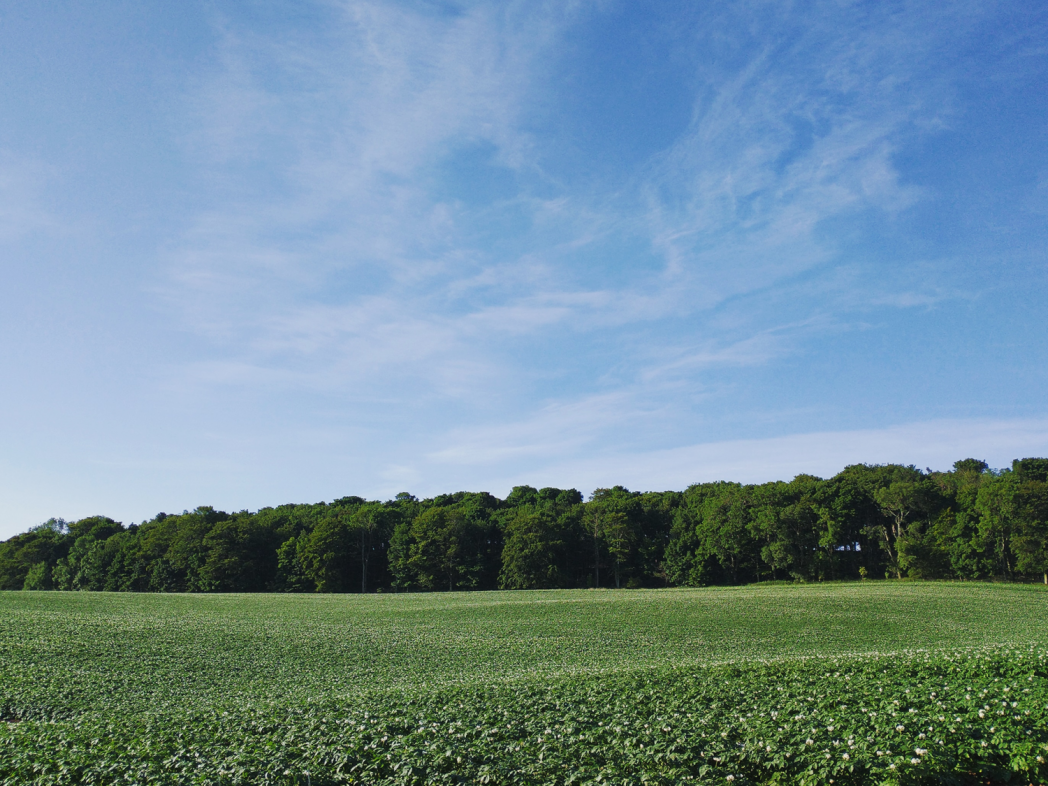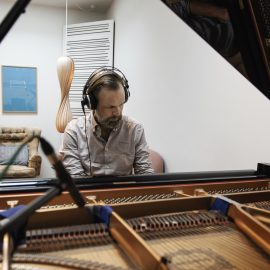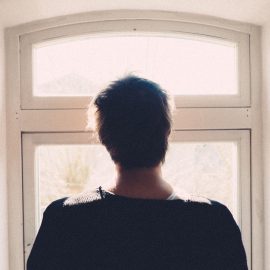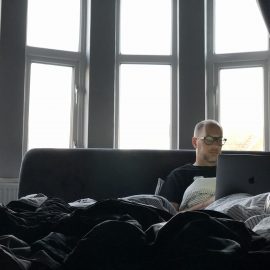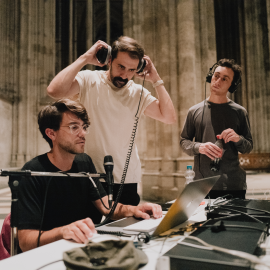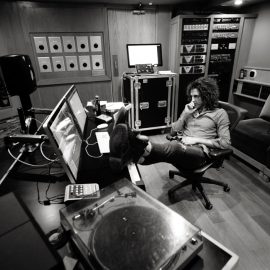Let’s start at the very beginning. Can you tell us how you got involved in composing, and what was your very first piece of gear?
I began playing the drums in my early teens on a Simmons SDS9, complete with bright red 5-piece hexagonal drum pads. In fact, they’re still in my parent’s garage to this day. I went to drum lessons for a while as well as being in a couple of rock bands playing covers until I left school. Apart from drums, I didn’t really play any instruments, but I’d harbored a strong urge to compose for years. Around 2001 I got my first PC and began using Cakewalk Home Studio, which was very basic but fun, and I managed to get my first two albums out of it.
How many different studio iterations have you gone through, and what does your final setup look like right now?
My ‘studio’ in quite a few different locations for the last 20 years has mainly been a PC, so it hasn’t really evolved much. I have a Roland Quad Capture interface, Adam F5s, and an Arturia Keystep. That’s it. It’s as basic as it could be, but for me, it’s pretty much all I need. I have a few pieces of percussion, a glockenspiel, toy instruments, cheap electric guitar, and a couple of acoustic ones, but in recent years I’ve been producing the majority of my music entirely using a DAW. I’m currently working at a desk in the spare room of the cottage where I live with my partner, which is on the coast, very rural, very quiet, and with natural light and great views in all directions. My dog, Gertie, is often asleep under my desk.
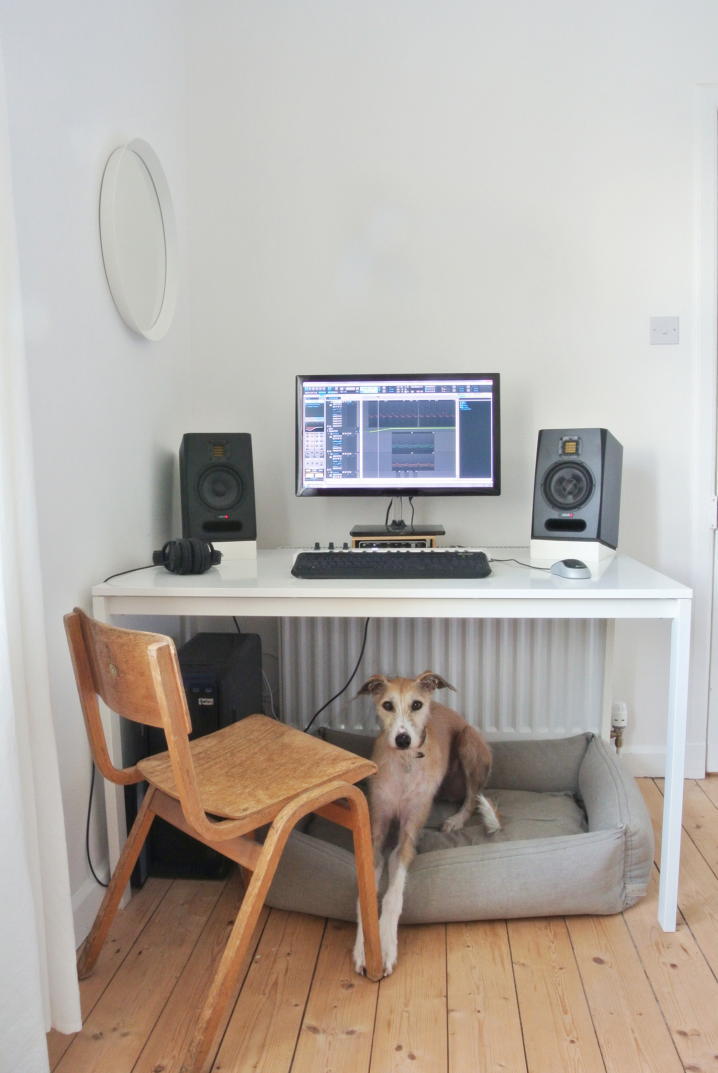
Tell us about your favourite piece of hardware.
I’d have to say my PC, simply because it’s vital. But truthfully, it’s a means to an end. I don’t get terribly excited about hardware or have a favourite, although the Keystep is a lot of fun.
And what about the software that you use for production?
Currently, Cakewalk Sonar X2 is my DAW. I accidentally stumbled across Cakewalk over 20 years ago. I expect there are better or more suitable DAWs, but I know it inside out; it works for me and simply never goes wrong. But now, as I’m between albums, I’m about to overhaul my system. Installing SSDs and probably changing over to Studio One as my main DAW as Sonar is pretty much dead, unsupported, and no longer updated, and I feel it might change how I work. I use Kontakt a lot. Both for using 3rd party libraries and to make my own instruments from field recordings and my own samples. There’s a handful of Kontakt library producers that I frequently use, such as Sound Dust, Decent Samples, and Spitfire Audio. I tend to get excited by the smaller, unique sample library producers rather than the big companies making libraries for ‘epic’ trailer music.

Is there a particular piece of gear that you’re just dying to get your hands on, and do you think one day you’ll have it?
In order of priority and likelihood, a bigger monitor, more processing power, and Native Instruments Maschine.
Can you please share some aspects of sound design in your work?
Although there’s an infinite amount of perfectly usable Kontakt instruments out there, I always enjoy picking out individual WAV samples from a particular library and playing around with them. These samples are usually raw, close-mic’d, and stripped of the effects imposed on you when playing through the user interface. It’s something I often do with Kontakt solo string libraries; time stretching, pitch-shifting, or layering to create a new instrument or an interesting loop. It can introduce new elements to a sample, giving it a whole new character and making it sound old and tired or completely removed from what it originally was.
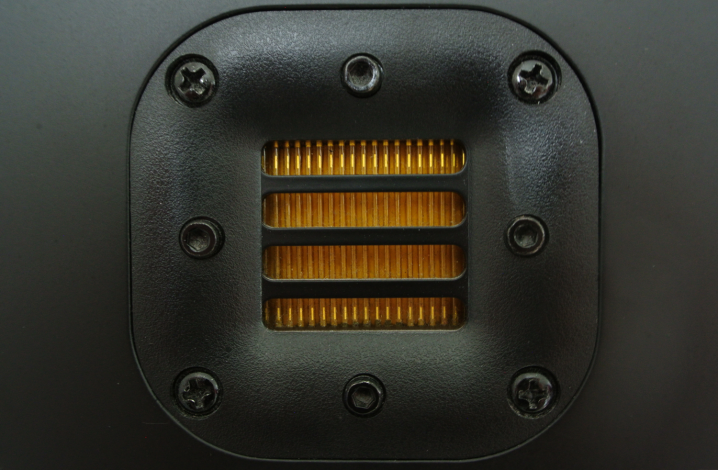
Any particular new techniques that you tried out for your new album?
I layered a lot of very similar-sounding instruments for this new album, especially for melodic parts. For example, on ’20/53′, there’s a motif that plays in the middle section; I’m using three instruments, one is panned hard L, one hard R, and one central. The result sounds quite expansive, but because the sounds are similar, you don’t consciously notice they’re different instruments, and it turned out to be an effective way of spreading something across the stereo field.
What does your live setup look like, and what do you bring with you when you travel for an extensive tour?
I don’t play live. Partly because I expect the experience would be more terrifying than rewarding, but also because I struggle to imagine my music played live and what my role could be in that.
What is the most important environmental aspect of your current workspace, and what would be a particular element that you would improve on?
Being in a rural location is great because it’s so quiet. I used to live in the city, and I was often limited to working with headphones so that I wouldn’t disturb the neighbours or have outside noise disturb me. Currently, space is a slight issue. I don’t have all of my instruments to hand all the time. We have an attic that is big enough to be converted into a much more suitable space for me, so that might happen at some point.
What can you tell us about your overall process of composition? How are the ideas born, where do they mature, and when do they finally see the light?
I tend to think of albums rather than individual tracks. Every album I’ve done has a theme or narrative. The concept always comes first. I’ve had the idea for Windscale for about ten years. I’ll plot the story I want to tell and break it down into the parts I feel are the most important, then write a track for each. I feel that if there’s a story, it can help the album to flow naturally. When I begin a track I’m straight into the DAW, selecting instruments I feel are most appropriate for the topic or atmosphere required. When I’m away from my desk, I’m always listening to works in progress. In a way, that’s where ideas mature; that’s when I’ll be discovering what direction a track needs to go in. For Windscale, I watched a lot of old footage of the nuclear facility before any composing had begun and also while listening back to tracks. It was good to make sure the music resonated with the imagery.

After the piece is complete, how do you audition the results? What are your reactions to hearing your music in a different context, setting, or a sound system?
One issue with working so intensively with a DAW is that it’s visual. A track’s appearance on the screen is a distraction and can fool you into thinking you’re hearing something else. I find it so important to listen properly without the screen. I have a long commute to work each day by bus. It’s a perfect opportunity to get some serious listening done on headphones while making mental notes. When an album is close to being finished, I’ll listen on a couple of different pairs of headphones, on my monitors, and also Bluetooth speakers, all of which I’m very familiar with and know how they should sound.
Do you ever procrastinate? If so, what do you usually find yourself doing during those times?
I procrastinate in general, but not so much with music; I can take time out from music for weeks or months simply because I’m busy doing something else or don’t feel like making it. I definitely procrastinate towards the final stages of an album. It’s a laborious task to make all the final checks to the mix just before sending it off. I can put that off for months! I think for me, there’s a lot of anxiety associated with admitting to myself that something is finished, and there’s also a fear of hearing something in the future that I wish I had done differently.
What gets you inspired?
This brings me back to writing music for a story; inspiration takes care of itself if I’m very interested in the subject I’m writing about.
And finally, what are your thoughts on the state of “electronic music” today?
I used to absorb music like a sponge, but not so much these days, probably because I have limited time to do so, so I’m maybe not the right person to ask. When I do have time to listen, I’ll be listening to radio such as 3WK, KEXP or SOMA Digitalis, BBC 6 Music or NPR.
